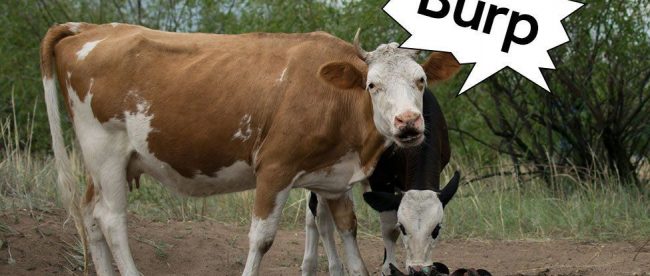The Grass With … Less Gas?

There are many dangers in life, way too many to list here. But let’s pick a few anyway. Don’t play with fire. Running with scissors is a bad idea. So is go in against a Sicilian when death is on the line. And of course, there’s the problem with cow farts.
Okay, in fairness, cow burps are a bigger problem. But regardless, it’s a good idea if we can find ways to get them, overall, to be less gassy.
The reason? Climate change. Climate change is one of the bigger issues facing the world today, and the emission of greenhouse gases such as methane is one of the causes of the problem. As previously noted in these pages, something called “enteric fermentation” creates a non-trivial amount of these emissions — it accounts for, roughly, a third of greenhouse gas emissions from the agricultural sector and, therefore, about 3% overall, at least in the United States.
Enteric fermentation, while sounding sciency, has a less proper name: it’s the gas that comes out of cows and other livestock when they burp or pass gas. (As alluded to above, cow burps are a lot more of a concern than cow farts; about 90% to 95% of methane emitted by cattle comes out in burp form, not via flatulence or manure, per TED.) More cow burps mean more methane, which means more climate change.
To combat this, the scientific community has tried a lot of things, but one relatively recent, and a potentially promising solution is to treat them more like fish. No, cows probably shouldn’t be sent for a swim — while they’re pretty good swimmers and they won’t drown, it won’t help with the gassiness. But they should eat like fish, maybe. Specifically, there are researchers testing whether cows should supplement their grass diets with a side order of seaweed.
As Wired explains, “bromoform, a compound found in kelp, blocks methane byproduct but still allows the bovines to burp,” so researchers “fed seaweed to synthesized cow stomachs, then attached gas production monitors to see whether the algae diminished or escalated methane emissions.” (Yes, apparently, we’ve created synthesized cow stomachs.) The results were promising; one researcher told Wired that “at low levels, red seaweed—less than 2 percent of feed intake—can dramatically reduce methane emissions, cutting it back by 10 to 20 percent.”
The problem, though, is that we just don’t have enough of the right type of seaweed to feed all the cows. As Discover explains, “in order for the seaweed to have a real benefit in reducing emissions, species of Asparagopsis [the red seaweed] would need to be produced on a global scale,” and we’re far away from that. There are efforts to increase the output, but it’s unclear how successful those efforts will be.
Luckily, that may not be the only way forward. Another research team is trying to find ways to cross-breed the plants, hoping to make “super grass,” as its often called. The idea is to grow grass that contains the bromoform from the kelp while still maintaining the nutrients from the regular grass — it would be “more climate-friendly because they are produced using less fertilizer than other types of grass and take up more nitrogen,” per the research team. Further, because it would be easier to digest, it may also allow the cow to produce more milk. It’s a win-win… if it works. In 2016, the BBC reported that the science was “seven or eight years” away, so, we still have to wait a bit to find out.
For now, cows are just going to be gassy.
Bonus fact: Cows aren’t alone among the animal kingdom when it comes to making methane. (They’re a top concern because we raise them as livestock, so there are a lot of cows and we have a lot of control around their diets.) Elephants also emit a lot of the gas — enough to power a car. According to the International Elephant Foundation, a leading conservatory group, “properly equipped, a car could travel 20 miles on the amount of methane produced by one elephant in a single day.”
From the Archives: Another Way to Milk a Cow: Backpacks, not grass, as a cow-caused climate change abatement strategy.
